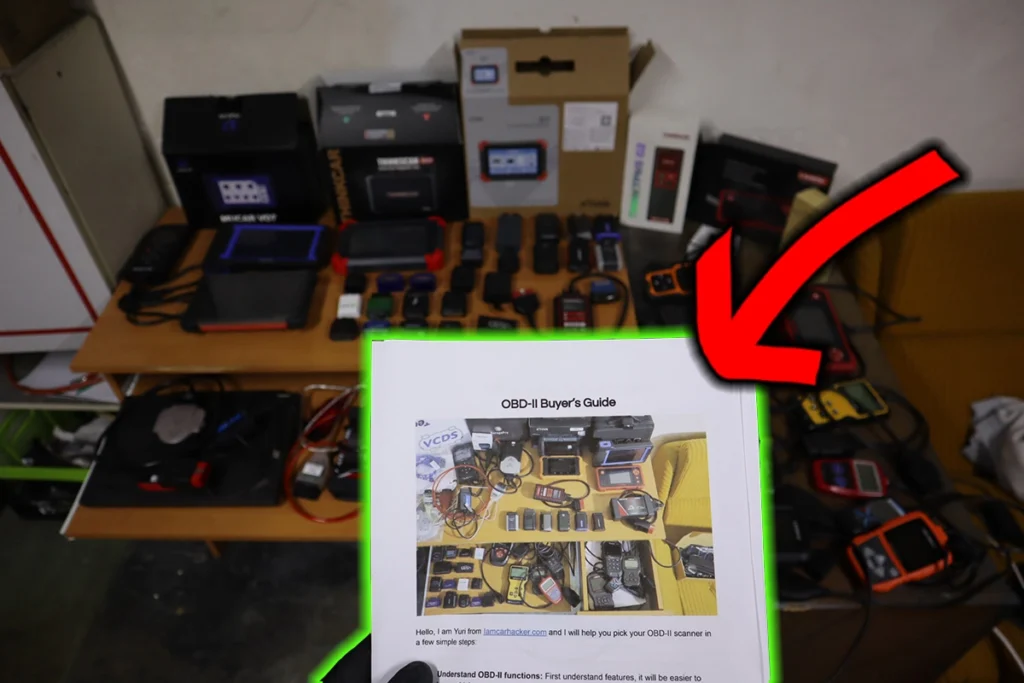The P2587: Turbocharger Boost Control Position Sensor ‘B’ Circuit Range/Performance code indicates that there is a range or performance issue with the circuit of the turbocharger boost control position sensor ‘B’. This sensor is essential for regulating turbo boost pressure accurately. Problems with the sensor or its associated wiring could lead to the ECM receiving incorrect information, resulting in improper boost control.
P2587 – Quick Overview
| Code | Information |
|---|---|
| Meaning | P2587: Turbocharger Boost Control Position Sensor ‘B’ Circuit Range/Performance |
| Is it serious? | Yes, as incorrect sensor readings can lead to improper boost pressure regulation, affecting engine performance, fuel efficiency, and potentially causing damage to the turbocharger or engine. |
| Possible causes | – Range or performance issues with the turbocharger boost control position sensor ‘B’ circuit – Faulty turbocharger boost control position sensor ‘B’ – Wiring or connector issues |
| How to diagnose? | – Test the range and performance of the turbocharger boost control position sensor ‘B’ circuit – Inspect and test the turbocharger boost control position sensor ‘B’ – Check wiring and connectors – Replace faulty components if needed |
P2587 Meaning
The P2587: Turbocharger Boost Control Position Sensor ‘B’ Circuit Range/Performance code indicates that the Engine Control Module (ECM) has detected an out-of-range or improper performance signal from the turbocharger boost control position sensor ‘B’. This sensor monitors the position of the turbocharger actuator to help manage the boost pressure. An issue with this sensor can lead to the turbo being unable to produce the correct pressure, resulting in performance issues like reduced power, overboost, or underboost.
Step-by-step diagnostic guide
| Action | Description | Tools Needed |
|---|---|---|
| Check for Other Related Codes | Use an OBD-II scanner to determine if other related codes are present. Codes related to turbocharger or engine performance can provide additional information about underlying problems. | OBD-II Scanner |
| Inspect the Turbocharger Boost Control Position Sensor ‘B’ | Locate the boost control position sensor ‘B’ and visually inspect it for any signs of physical damage, such as cracks, corrosion, or wear. Ensure that the sensor is properly mounted and that the connector is securely attached. | Flashlight, Safety Gloves |
| Test the Sensor Range and Performance | Use a multimeter or diagnostic tool to test the sensor output. Check the voltage or resistance and compare it to the manufacturer’s specifications to ensure it falls within the correct range. If the output is erratic or out of range, it indicates a performance issue with the sensor. | Multimeter, Diagnostic Tool |
| Monitor Live Data with a Diagnostic Tool | Use a diagnostic tool to monitor live data from the boost control position sensor while the engine is running. Check for any inconsistencies or abrupt changes in the sensor signal, which could indicate a range or performance issue. | Diagnostic Tool |
| Check Wiring and Connectors | Inspect all the wiring and connectors leading to the boost control position sensor ‘B’. Look for signs of damage, such as frayed wires, loose connections, or corrosion, which could cause signal loss or incorrect readings. | Flashlight, Multimeter |
| Repair or Replace Faulty Wiring/Connectors | If any issues are found in the wiring or connectors, repair or replace them as necessary to restore proper connectivity. Secure all connections and ensure that wires are free of damage. | Basic Tools, Replacement Parts |
| Replace Faulty Turbocharger Boost Control Position Sensor | If testing indicates that the boost control position sensor ‘B’ is not providing correct signals, replace it. Ensure that the replacement sensor is properly installed and calibrated for accurate turbocharger boost management. | Replacement Boost Control Sensor |
| Clear the Code and Test Drive | After making the necessary repairs, use an OBD-II scanner to clear the fault code. Test drive the vehicle and monitor turbo performance to ensure the boost levels are correct and that the P2587 code does not return. | OBD-II Scanner, Vehicle Owner’s Manual |
| Recheck for Codes | Re-scan the vehicle using the OBD-II scanner to verify that the P2587 code has been cleared. If the code persists, further diagnostic steps may be needed to determine any additional issues with the turbo system. | OBD-II Scanner |
Free PDF: How to choose OBD2 scanner

I’ve made you a free PDF to choose the OBD2 scanner in 5 minutes.
✅ Which OBD2 scanner is best?
✅ Which type should you get (DIY, Pro, Hobby)
✅ What is the best scanner for the exact brand/feature (e.g best for BMW)
✅ How to get a Bi-Directional tool for as cheap as $40
✅ Discount coupons for scanners
PDF is 100% free and it is designed to help you pick a scanner in less than a few minutes! Not a boring 50-page guide.
Just tell me where to send it.

Hi, I am Juraj “Yuri” Lukacko. I got frustrated by unhelpful and scammy mechanics, so I decided to learn everything about car diagnostics myself. I test dozens of new car diagnostic tools every month along with learning new strategies to fix and customize cars. About Juraj Lukacko (Yuri)